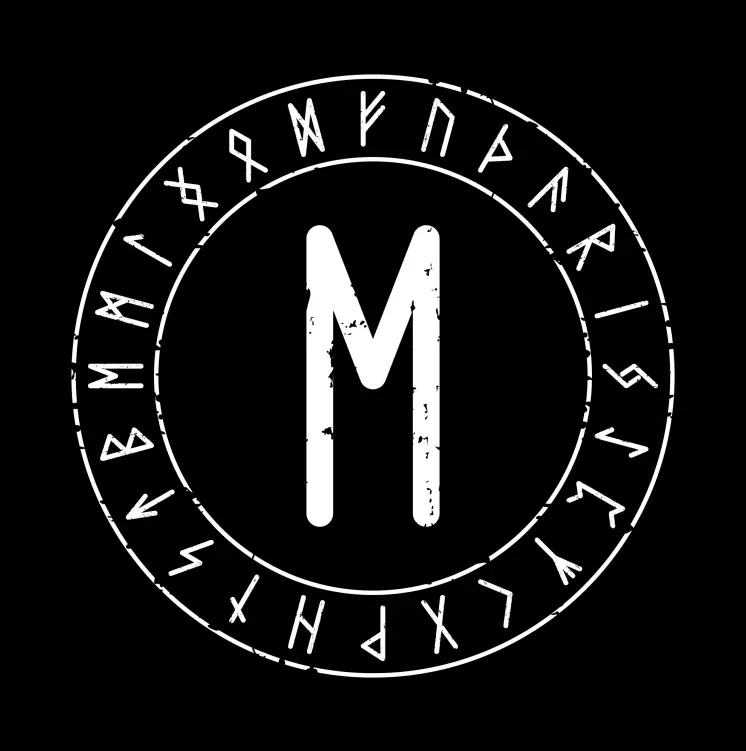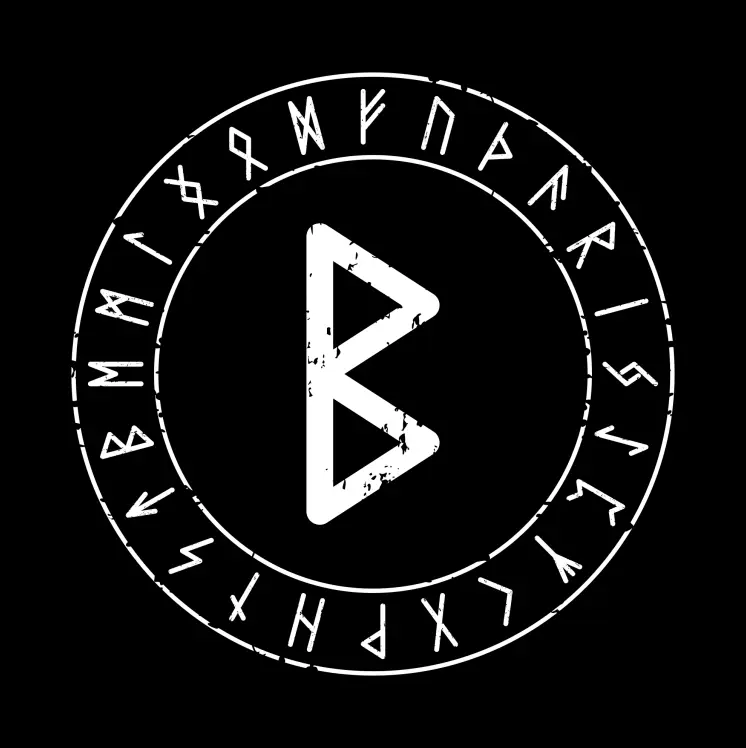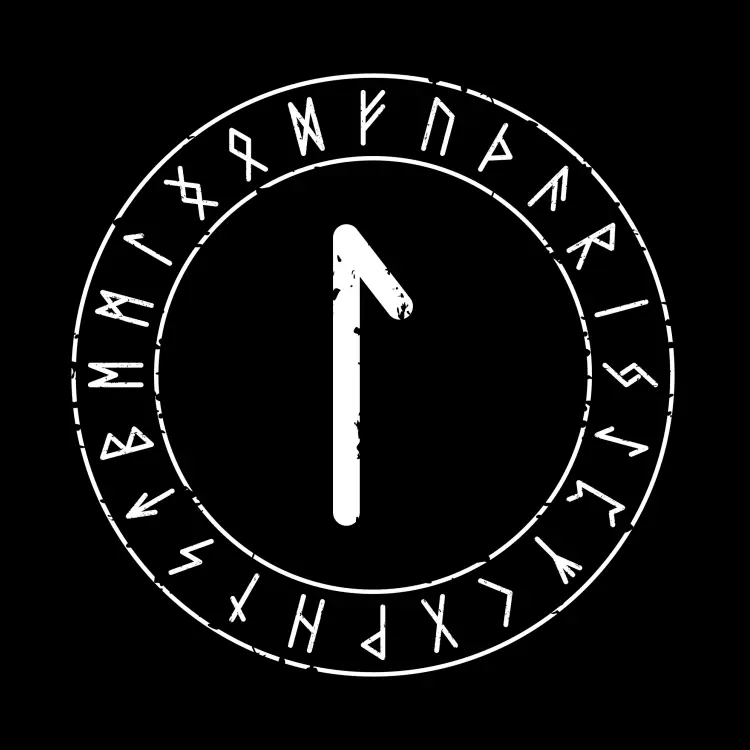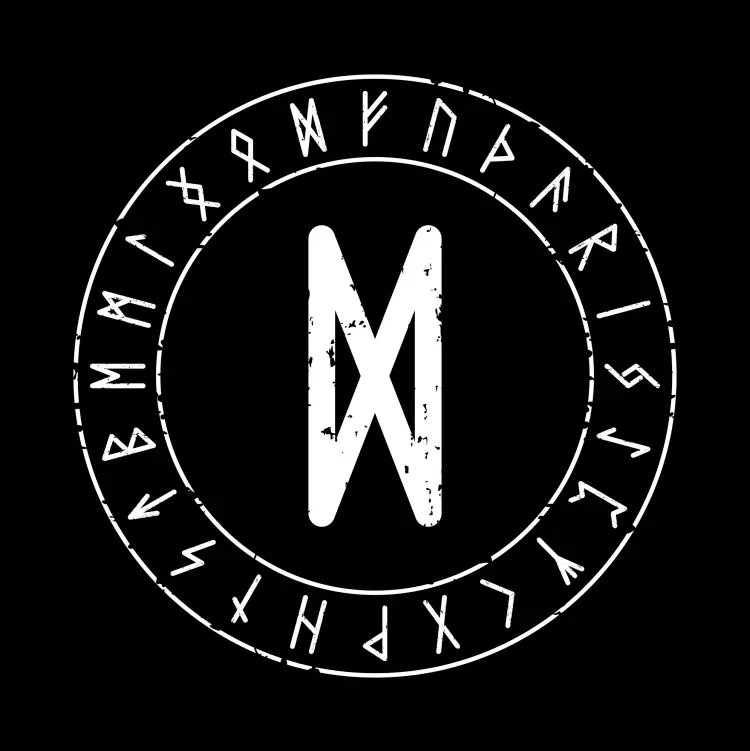The Elder Futhark is the oldest known runic alphabet, used by Germanic tribes from around the 2nd to the 8th centuries CE. It consists of 24 runes, divided into three groups called ættir (meaning “families” or “clans”). Each ætt contains eight runes and is traditionally associated with different aspects of life, the cosmos, and Norse cosmology.
The Third Ætt, also known as Tyr’s Ætt, is often linked with themes of responsibility, endurance, transformation, and the challenges of fate. It is named after the Norse god Tyr, associated with law, justice, and sacrifice.
Below is a detailed overview of the eight runes of the Third Ætt:
1. Tiwaz (ᛏ)
- Phonetic Value: T
- Meaning: Tyr, the god of war and justice
- Symbolism: Honour, duty, self-sacrifice, leadership, victory
- Interpretation: Tiwaz represents moral courage, discipline, and taking the right path even when it is difficult. It is the rune of warriors, often indicating a need to stand firm in the face of adversity.
2. Berkano (ᛒ)
- Phonetic Value: B
- Meaning: Birch tree
- Symbolism: Birth, renewal, fertility, feminine energy
- Interpretation: This rune is associated with motherhood, nurturing, and growth. Berkano is linked to beginnings and healing, and may point to family matters or personal transformation.
3. Ehwaz (ᛖ)
- Phonetic Value: E
- Meaning: Horse
- Symbolism: Trust, movement, partnership, progress
- Interpretation: Ehwaz symbolises loyalty and teamwork, often referring to harmonious relationships or the steady forward motion of life. It can also represent journeys, both physical and spiritual.
4. Mannaz (ᛗ)
- Phonetic Value: M
- Meaning: Man, humanity
- Symbolism: The self, society, cooperation, awareness
- Interpretation: Mannaz reflects the individual in relation to others. It highlights human connection, intellect, and introspection. It can indicate the need for mutual understanding or the presence of support within a community.
5. Laguz (ᛚ)
- Phonetic Value: L
- Meaning: Water, lake
- Symbolism: Emotion, intuition, flow, the unconscious
- Interpretation: Laguz represents the deep, emotional currents of life and the importance of going with the flow. It can point to creativity, spiritual insight, or hidden depths. Sometimes, it warns of emotional instability or illusion.
6. Ingwaz (ᛜ)
- Phonetic Value: NG
- Meaning: Ing (a fertility god)
- Symbolism: Fertility, potential, inner growth, completion
- Interpretation: Ingwaz is the rune of gestation, the seed about to sprout. It represents stored energy ready to be released, and often appears when a phase of inner preparation is about to result in a breakthrough or manifestation.
7. Dagaz (ᛞ)
- Phonetic Value: D
- Meaning: Day, dawn
- Symbolism: Awakening, clarity, transformation, hope
- Interpretation: Dagaz signals a breakthrough, enlightenment, or moment of clarity. It marks the transition from darkness to light, symbolising progress, balance, and a new cycle beginning. It is a rune of optimism and change.
8. Othala (ᛟ)
- Phonetic Value: O
- Meaning: Ancestral land, heritage
- Symbolism: Inheritance, roots, tradition, family, homeland
- Interpretation: Othala is tied to ancestral wisdom, cultural values, and spiritual inheritance. It may refer to property, legacy, or personal identity shaped by one’s lineage. It can also speak to the preservation of tradition and the protection of what is sacred.
Summary of the Third Ætt
The runes of Tyr’s Ætt collectively explore themes of personal responsibility, spiritual maturity, legacy, and the transformation that arises from inner and outer challenges. They invite reflection on how individuals relate to their community, their beliefs, and the cycles of life.
This ætt closes the Elder Futhark sequence, bringing the rune journey full circle—from primal forces and material concerns in the first ætt, through interpersonal and social struggles in the second, to the spiritual and ancestral realms here in the third.



